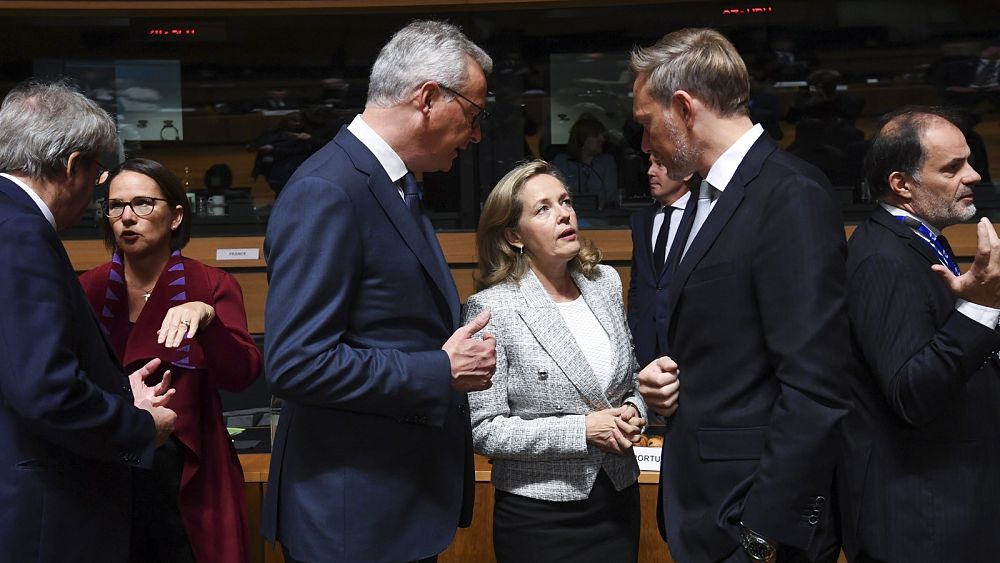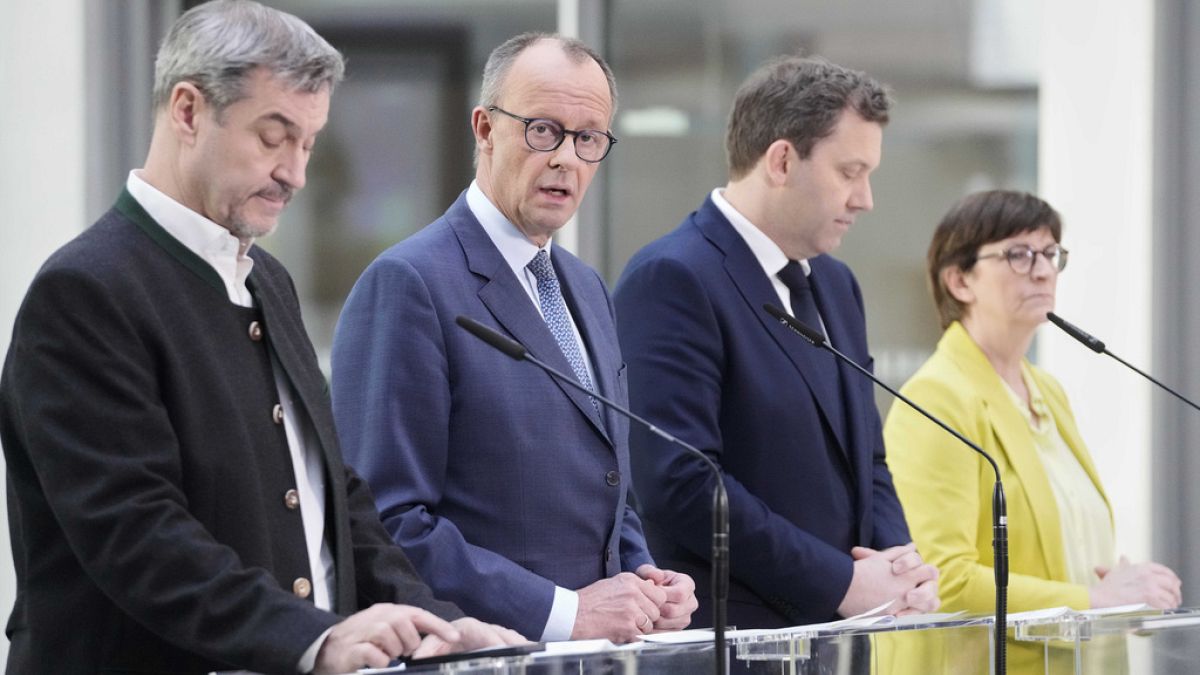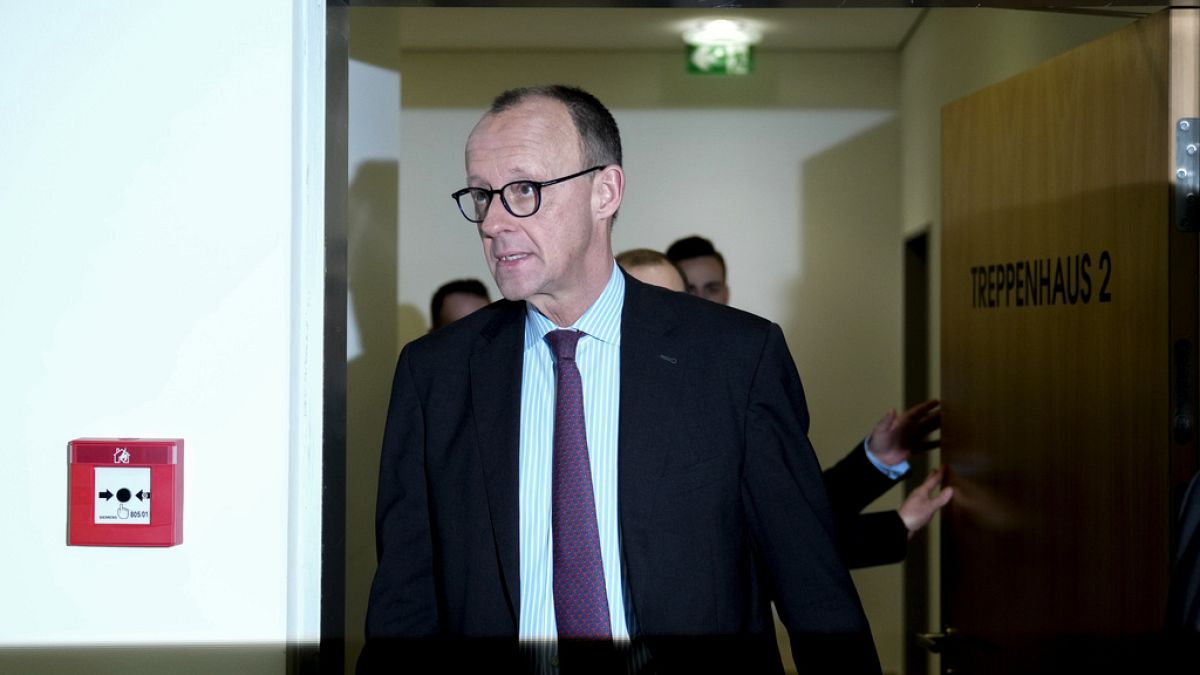Inside the political fight to reform the EU fiscal rules

The European Union is racing to reform its fiscal rules, with a self-imposed deadline to wrap up work before the end of the year. But getting there won’t be an easy ride as political discrepancies remain deep and wide.
The rules date back to the late 1990s, when member states that intended to adopt the euro were required to keep their budget deficits under 3% of gross domestic product (GDP) and their government debt below 60% in relation to GDP.
The Stability and Growth Pact (SGP) now applies to all EU countries in a bid to ensure sound and healthy finances.
Since then, it has been modified to address the 2007 financial meltdown and the ensuing sovereign debt crisis, which saw some nations adopt painful austerity measures to rein in their soaring spending.
Fast forward to 2023 and the need for a new reform becomes obvious: in just three years, the bloc has gone through the COVID-19 pandemic, Russia’s war on Ukraine, an energy crisis and record-breaking inflation. Throw in the worsening effects of climate change and a fierce global race for cutting-edge technology and you have a profoundly transformed economic landscape.
Four friction points
The European Commission proposed in April an overhaul to make the long-standing fiscal rules more future-proof.
It keeps the 3% and 60% targets untouched, which some economists consider obsolete and arbitrary, but makes important changes to the way in which the two figures should be met in practice.
Each member state would have to design a mid-term fiscal plan to cut down its deficit levels at a credible pace and put public debt on a “plausible downward path,” that would need to be negotiated with the European Commission and approved by the EU Council.
The fiscal adjustments necessary to meet – or at least head towards – the 3% and 60% marks would be carried out over a period of four years, matching electoral cycles, and could be extended to seven years in exchange for further reforms and investments.
While the combination of fiscal sustainability and national ownership has been welcomed across the board, economy and finance ministers have spent the last months haggling over provisions of extreme technicality.
In hopes of bridging the gaps, Spain, the current holder of the Council’s rotating presidency, has split the talks into four “building blocks,” which happen to be the four friction points around the table. The pressure is definitely on, as the fiscal rules are currently suspended and due to kick back in on 1 January.
Debt-reduction safeguards
Everybody in the EU agrees high levels of public debt are detrimental and must be brought down. What nobody agrees on is the pace of this reduction. How fast is too fast? Or rather, how slow is too slow?
Countries like France, Italy, Spain, Portugal and Greece, which have debt-to-GDP ratios that exceed the 100% threshold, are keen on maintaining as much flexibility as possible. They argue the mid-term plans would take into account their national characteristics and allow them to pave their own path towards sound finances.
But a larger group, including Germany, the Netherlands, Austria, Denmark and the three Baltic states, fear this leeway could be abused and lead to an excessively slow decline of debt that would weaken the credibility of the fiscal rules vis-à-vis capital markets.
In early April, Germany released a non-paper advocating for a “common safeguard” that would compel member states with debt-to-GDP ratios above 60% to slash debt levels by 0.5% or 1% per year, depending on their starting point.
“It should also be ensured that an actual reduction in debt ratios on an annual basis is achieved,” the document says.
Days later, the Commission made an open overture to Berlin by proposing safeguards, including a requirement to cut down deficit levels by 0.5% of GDP per year until they fall below the 3% mark.
The executive, however, did not introduce a uniform rule to slash debt levels by a certain percentage every year – the very thing that Germany had pushed for. Instead, it inserted a vaguely-worded requirement that says debt-to-GDP ratios should be lower at the end of the mid-term plans than at the start.
This failed to satisfy Christian Lindner, Germany’s federal minister of finance, who has since then made the case for numerical safeguards that would guarantee “equal treatment” between countries and ensure tangible results. But his French counterpart, Bruno Le Maire, rejected this idea warning automatic norms would be a “political mistake” and harm economic growth and productivity.
Only a German-French compromise could break the impasse.
Reforms and investments
The EU’s long-term ambitions come with a hefty price. Just to make the Green Deal come true, the bloc will need €620 billion in additional investments every year until 2030. For the digital transition, it will require €125 billion annually, while defence spending could take up to €75 billion until 2025.
Most of the money is expected to come from the private sector. Still, the eye-popping numbers have governments wondering how they will manage to get such huge sums.
This is why the issue of reforms and, particularly, investments are front and centre on the reform of the fiscal rules. The Commission says its proposal leaves enough space for member states to, on the one hand, inject funding into top priorities like clean energy and advanced microchips and, on the other, keep public spending at “prudent” levels.
But some capitals are not convinced and are pushing to introduce a so-called “golden rule” that would remove certain key investments from the computation of the deficit and debt ratios, effectively sparing them from fiscal surveillance.
Italy, the most vocal proponent, has suggested recovery funds and military projects as possible areas that could fall under a “golden rule.”
“Investments and spending linked to European priorities, including defence, are strategic policy goals that our fiscal rules cannot ignore,” Giancarlo Giorgetti, Italy’s minister for the economy, said in October.
The German-led coalition is frontally opposed to any sort of “golden rule” because, they say, one exemption would set the precedent for other exemptions in the future and poke holes in the fiscal framework and dent its efficacy.
Enforcement
The current fiscal rules have a corrective mechanism known as Excessive Deficit Procedure (EDP), which is triggered when a country’s deficit-to-GDP ratio exceeds the 3% threshold. Despite its name, it can also be activated when the debt-to-GDP ratio breaches the 60% ceiling and does not diminish at a “satisfactory pace.”
If a country, after being placed under the EDP, fails to take enough action to correct its financial wrongdoing, it can be slapped with a fine of up to 0.5% of its GDP.
The threat to pay up, however, has not translated into better enforcement. The EU’s fiscal framework has been regularly criticised for its uneven and soft-touch application, as debt levels soared past the 100% mark but no fines have ever been imposed.
Brussels wants to toughen things up and has proposed changes to speed up the EDP in case a country deviates from the commitments made in its mid-term plan. For highly indebted countries that stray away, the EDP will kick off by default. The reform also foresees smaller fines that could have a higher chance of being applied and reputational measures, such as bringing ministers in front of the European Parliament.
Ongoing talks are meant to fine-tune these provisions, with frugal-minded countries pushing for stronger guarantees to ensure proper enforcement becomes a reality.
Institutional balance
The last friction point is the least surprising because it stems from the well-known power struggle between the Commission and the Council.
Under the current proposal, the Commission would issue economic guidance to each country and negotiate the mid-term plan, which should lay out the path for a progressive reduction of deficit and debt levels coupled with reforms and investments.
Mimicking the method used for the COVID-19 recovery funds, the fiscal plans would then be approved by the Council and their implementation would be carried out by each government, under the Commission’s supervision. The executive would evaluate if commitments are being fulfilled and, if necessary, propose corrective measures.
The way of working has raised fears the executive would concentrate too much power across the entire process and that, as a result, member states could be side-lined. Discussions now centre on how to tweak this distribution of power.
“It’s good to have another pair of eyes,” said a senior diplomat, who suggested involving the European Fiscal Board, an independent advisory body, in the procedure.
Institutional balance and enforcement are considered the most advanced of the four building blocks, while safeguards and investments remain formidable challenges.
Source: Euro News















